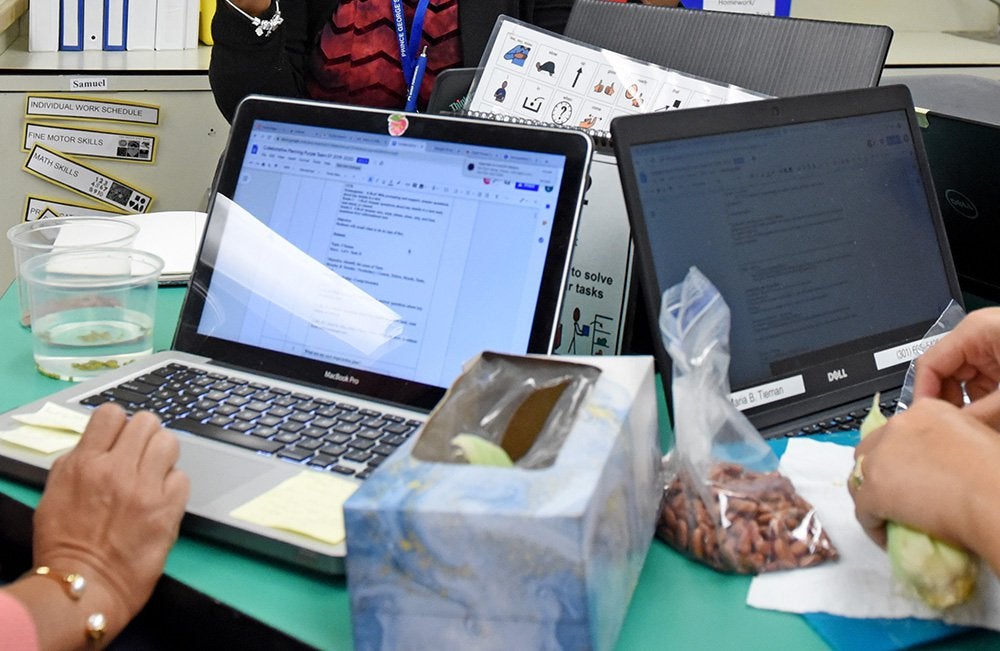Navigating the economic downturn hasn’t been easy for Erie Neighborhood House. In 2010, the Chicago social-service group had to cut programs and lay off employees to close a deficit of almost
$1-million.
But since then, the organization has restructured its finance department, hired more accounting staff, and started using new, more sophisticated accounting software. Celena Roldan, executive director of Erie Neighborhood House, says the organization is in a much stronger position to deal with future economic shocks.
With a clear financial statement, she says, “you’re able to see you’re spending this much on food versus this much on materials for children. It allows you to be able to then come up with an A, B, C, or D scenario.”
Since the start of the financial crisis, social-service groups have faced decreased donations, steep government cuts, and significant delays in government payments, all while the demand for their services has been increasing.
Erie Neighborhood House is one of 26 Chicago social-service charities in a program designed to help them overcome such challenges by bolstering their financial management. The effort, sponsored by the Wallace Foundation, focused on groups that run strong after-school programs, a longtime priority at the New York foundation.
The charities that made it through the recession in the best shape were the ones that were focused on good financial management before the crisis, says David R. Greco, a vice president at Nonprofit Finance Fund, an organization in New York that offers consulting services and loans to nonprofit groups.
He thinks a growing number of grant makers, including the Wallace Foundation, are realizing that financial management has often been the missing component in efforts to help organizations strengthen their operations.
Many nonprofits that are forced to close have good programs, smart employees, and even successful fund raising, says Mr. Greco. What does them in, he says, is how they manage their finances: “You can have this great car with great tires and a great stereo, but if you never change the oil, the engine is going to seize up on you.”
Stability Promotes Quality
Nonprofits don’t spend enough money on administration, in large part because of restrictions placed on foundation grants and government contracts, says Nancy M. Devine, director of communities at the Wallace Foundation. But over the long term, she says, the health and stability of an organization largely determine the quality of the programs it can provide.
“If you have limited dollars and you’re just trying to keep the lights on, you’re not thinking strategically about the kinds of programs that will, at the end of the day, benefit kids,” says Ms. Devine.
All of the groups in the program received training in budgeting, cash-flow projections, and the roles of the board and program staff in financial management. Fourteen organizations received initial grants of $115,000, intensive consulting services—and, if they completed the steps in the financial- management plans they laid out with the consultants, $125,000 for their cash reserves.
The remaining groups got initial grants of $40,000, assessments by financial- management consultants, and $25,000 to help adopt the recommendations. The charities that had the clearest understanding of the financial-management challenges they faced received the larger grants and more in-depth assistance, say foundation officials.
The program also has an advocacy component. Concerned that problems with government contracts and grants—such as charities not being able to use the money to pay for overhead and slow reimbursement— is detrimental to charities’ fiscal health, the Wallace Foundation made a $1.4-million grant to the Donors Forum to gather experts from government, philanthropy, business, and academe to recommend changes to reimbursement practices in Illinois.
Foundations can provide charities with financial-management assistance, says Ms. Devine, but “no matter what their capacity, if funders’ practices don’t support these organizations in ways that allow them to do their work without their hands being tied, then it’s not going to do any good.”

A Fuller Picture
Officials at Mujeres Latinas en Acción, a social-service group in the training program that provides assistance to Hispanic women and children, used their newfound cash- forecasting skills to fight delays in payments on its state grants.
When the state of Illinois announced that it was going to delay all payments to nonprofits for at least six months, the organization projected both its expenses and the amount of money it would receive during that period and realized that even if the group exhausted its $150,000 line of credit, it would still not be able to make payroll for the full six months. With that information in hand, Mujeres Latinas persuaded state administrators not to delay its payments.
“Information is power, but if you don’t have specific information, it’s less powerful,” says Maria S. Pesqueira, the organization’s chief executive. “We had specific information.”
Almost all the groups in the training program grappled with a disconnect between their budgets and the programs they offer, says Hilda H. Polanco, managing director of Fiscal Management Associates, the consulting company that runs the program for Wallace.
“Organizations often think of their operations as a consolidation of contracts and funders,” and too often their accounting systems give only that one view of their finances, says Ms. Polanco. But to make wise financial decisions, she says, charities also need to know the full cost of running each program, both the direct costs—such as supplies and salaries—and the program’s share of the organization’s overhead, like rent and utilities.
Government contracts often pay charities a set amount for each person who receives a particular service, and organizations run into trouble when they don’t know what it costs to provide that service, says Ms. Polanco.
Without those figures, she says, "I might very well accept a rate well under the total cost and be in a situation where every unit of service I deliver is causing me to have a deficit."
"Eye Opener" for Managers
When program managers at another charity in the Wallace program, Instituto del Progreso Latino, started to get financial statements that showed total costs, it was a “real eye opener” for some of them, says Juan Salgado, chief executive of the group, which aids Latino immigrants and their families.
In the past, the organization had a plan for how to allocate administrative costs, such as rent and utilities, to each program, but it didn’t apply the plan consistently. If the grant or contract that was the main source of revenue for a program couldn’t be used to pay for those costs, the charity shifted that program’s share into a general administration line item, which meant that it didn’t know the full cost of running that program.
After starting to calculate its total program costs, the organization realized that in one case it cost almost $65,000 to deliver the services stipulated in a $30,000 contract. So Instituto del Progreso Latino went to the organization that served as an intermediary for the state money to say it didn’t want the contract anymore.
“Between our zeal to serve our community and their zeal to get outcomes and say to the state, ‘Look at what we do for so little,’ we had created an unsustainable situation,” says Mr. Salgado.
In the end, the group was able to renegotiate the contract. Instituto del Progreso Latino didn’t receive any additional money, but the two sides were able to agree to more realistic expectations of what the group could do with
$30,000.
Mr. Salgado says he won’t hesitate to turn down agreements in the future now that he knows how to evaluate them.
“On the one hand, you say, ‘All right, we’re not going to be serving as many people,’ ” he says. “On the other hand, you say, ‘Well, we’re going to serve them better.’ It becomes a pretty easy decision.”
Tips for Smarter Financial Management at Nonprofits
- Develop a plan to allocate indirect costs, such as rent and utilities, to each of the organization’s programs and apply that plan consistently.
- Consider total program costs when deciding whether to accept a contract or grant; make sure it would cover all expenses.
- Budget conservatively, using data about the number of clients programs typically attract.
- Make sure the group’s accounting software can track expenses by program as well as by contract or grant.
- Build a system for providing up-to-date financial information.
- Monitor revenue and expenses closely to identify potential financial problems early and make changes.
- Develop a way to share financial data regularly with all employees.
- Build a reserve fund. Healthy reserves can make it easier to say no to contracts and grants that aren’t right for the charity.
Conservative Approach
For the Gads Hill Center, one of the biggest changes to come out of the Wallace program was a new mind-set, says Barbara Castellán, the group’s chief executive. She says the nonprofit, which serves children and youths on Chicago’s West Side, has learned to budget conservatively rather than hopefully.
If a government contract states that the most the organization can receive is $100,000, it’s tempting to put that contract into the budget as $100,000 in revenue, says Ms. Castellán. But, she says, the group will receive the total amount only if its program is full: “If you don’t reach that level of enrollment, you’re already in a deficit.”
Like other groups in the Wallace program, Gads Hill has become vigilant about building its reserve fund, which is up to nearly $300,000, enough to cover operating expenses for more than 30 days. “We never had a reserve before,” she says.
When Gads Hill was selected for the Wallace project, it had just come through a failed expansion of its after-school program, which left the group in difficult financial straits. Ms. Castellán says the charity could have cut its losses if it had decided to close the expansion earlier, but it was reluctant to do so because of the children who depended on the program. But now that the charity has systems that provide regular, timely financial information and officials know what data to monitor, she believes Gads Hill can make tough calls earlier.
Says Ms. Castellán: “We understand that in order to be here next year, we can’t wait to make hard decisions.”




